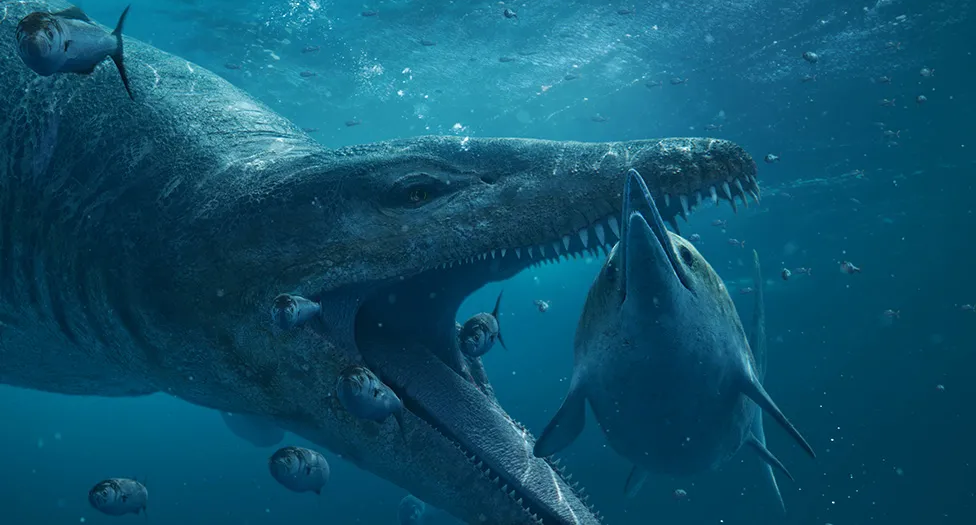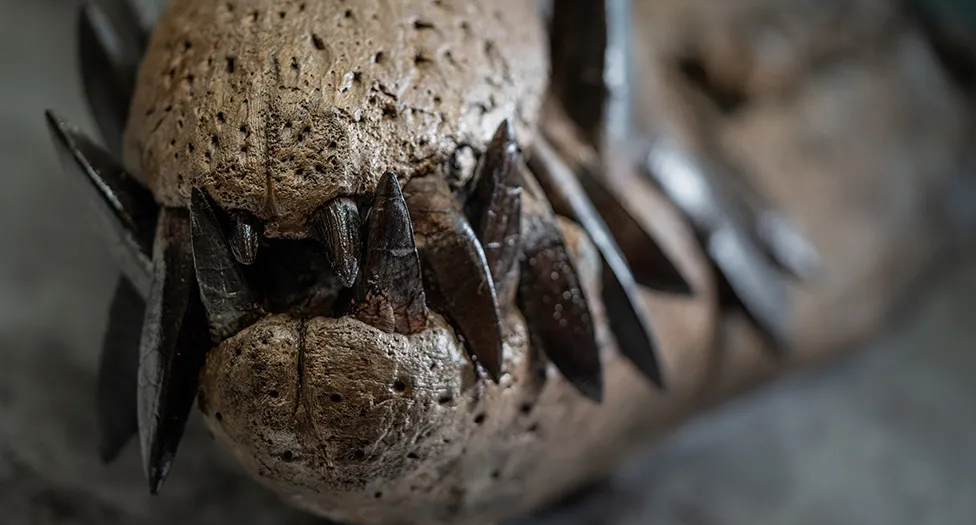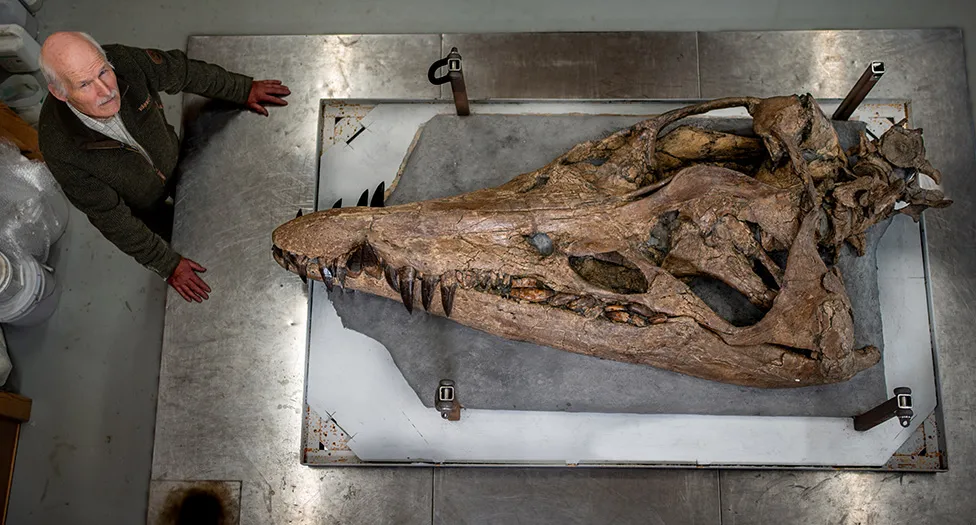The skull of a colossal sea monster has been discovered on the cliffs of Dorset’s Jurassic Coast in the United Kingdom.
It belongs to a pliosaur, a fearsome marine reptile that ruled the oceans about 150 million years ago.
The two-meter-long fossil is one of the most complete specimens of its type ever discovered and is giving new insights into this ancient predator.
As the sheet covering the fossil was pulled back and the skull was revealed for the first time, it was immediately obvious that this pliosaur is huge and beautifully preserved.

According to local palaeontologist Steve Etches, there isn’t a specimen anywhere else to match it. He said that,
“It’s one of the best fossils I’ve ever worked on. What makes it unique is that it’s complete.”
The lower jaw and upper skull are fused together, just as they would have been in the creature’s life. Such an incredibly detailed connection is a rarity worldwide. In most cases where specimens are found with this level of detail, crucial parts are often missing. However, in this instance, despite a slight distortion, every bone is intact and accounted for.
The skull is longer than most humans are tall, which gives a sense of how big the creature must have been overall.
The skull has 130 teeth, including long and razor-sharp ones at the front, which could kill with a single bite.
The back of each tooth is marked with fine ridges. These would have helped the creature to pierce the flesh and then quickly extract its dagger-like fangs, ready for a rapid second attack.
The pliosaur was the ultimate killing machine, and at 10–12 meters long, with four powerful flipper-like limbs to propel itself at high speed, it was the apex predator in the ocean.

Dr. Andre Rowe from Bristol University said,
“The animal would have been so massive that I think it would have been able to prey effectively on anything that was unfortunate enough to be in its space,”
“I have no doubt that this was sort of like an underwater T-rex.”
Its meals would have comprised not only other reptiles like its long-necked relative, the plesiosaur, and the dolphin-shaped ichthyosaur, but also fossil records suggest it would have preyed upon other pliosaurs passing by.















